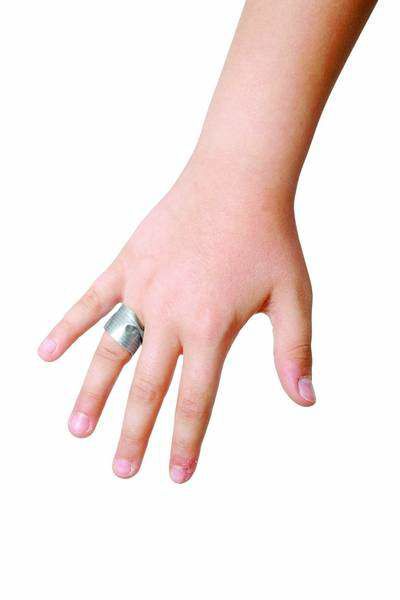Wart removal on a roll
Published 5:00 am Thursday, August 17, 2006

- Wart removal on a roll
The common wart is a common problem for kids. So maybe its fitting that it has a rather common solution: duct tape.
Dermatologists have been experimenting with duct tape as a treatment for warts for years, and some doctors swear by the method. And after a recent study pitted the silvery plastic fix-it-all tape against the standard medical treatment for warts in a head-to-head, randomized clinical study, the duct tape approach is beginning to stick.
Trending
Warts are generally more an inconvenience and embarrassment than a medical problem but left untreated, they can bleed, cause pain and spread. Warts are a type of infection caused by viruses from the human papillomavirus family. Some people are more resistant to the viruses than others and dont seem to get warts as easily, but doctors dont know why.
While you cant get warts from a frog or toad, warts can be passed on to another person through direct contact or by sharing towels or other objects used by a person who has warts. A cut or scrape can make any area of skin more vulnerable to warts, and picking at warts can increase the chance they will spread.
About 10 percent of children will experience warts, most commonly affecting 12- to 16-year-olds. With the pressures of conformity, a case of warts can be a traumatic experience for many adolescents. Generally, warts will resolve themselves on their own within two years, but many kids find them embarrassing and ask to have them treated.
Limited options
The problem is theres usually no quick and effective treatment. Most doctors seem to rely on cryotherapy, which involves freezing the wart with liquid nitrogen for 10 to 20 seconds, every two to three weeks.
But the procedure can cause a painful, burning sensation that might be tough for some kids to handle. And cryotherapy involves the inconvenience of returning to the doctors office for follow-up treatments every couple of weeks until the wart disappears. If treatments are stretched out to three or four weeks between treatments, the effectiveness drops nearly in half.
Trending
Thats why duct tape is such an intriguing solution. The therapy is painless (other than the standard pain of pulling tape off of skin) and certainly cheaper than repeated doctor visits.
But until recently, doctors didnt really know how effective it was. Researchers from the Department of Pediatrics at the Madigan Army Medical Center in Tacoma, Wash., set out to find out.
The researchers recruited 51 patients between the ages of 3 and 22, assigning them randomly to either a cryotherapy or duct tape group. Patients in the duct tape group were shown how to cut and affix a piece of duct tape as close to the size of the wart as possible. They were told to leave the tape in place for six days. After six days, they were to remove the tape, soak the area in water, and gently scrape the dead top layer off the wart with a pumice stone or emery board.
The tape was left off that night and reapplied the following morning. If the tape fell off, patients were instructed to replace it with a new piece.
Patients in the cryotherapy group returned to the doctors office every two weeks for another application of the liquid nitrogen.
After two months, 22 of the 26 patients (85 percent) in the duct tape group saw their warts disappear, most within the first four weeks. The researchers noted that if the warts did not show signs of reduction within two weeks of duct tape use, they were unlikely to go away within the two-month study period.
In contrast, only 15 of the 25 patients (60 percent) undergoing cryotherapy had a resolution of their warts. As with the duct tape therapy, most saw the warts go away in the first month.
Natural defenses
We dont know for sure why it works, but it may involve stimulation of the patients immune system through local irritation, says Dr. Rick Focht, the lead author of the study.
The researchers also observed that when a wart on a hand was covered in duct tape, other warts on the same hand also started to go away. They suggested the effect might be due to the stimulation of the bodys immune system as well. A previous study testing ways to marshal the bodys immune system to cure warts found a similar effect.
Doctors arent really sure why the freezing therapy works either, but the prevailing theory is that freezing also causes local irritation.
Patients in the cryotherapy group were much more likely to report any complaints about the treatment, mostly pain and burning. Virtually all of the patients reported pain after cryotherapy, but the severity of the pain ranged from mild to severe. One child in the study came to fear the cryotherapy so much that he vomited before every procedure.
Duct tape is more practical for parents and patients to use, Focht says. There was also better compliance in our study within the duct tape group, primarily due to ease of administration.
The study did not consider other common treatments for warts, such as applying salicylic acid, such as Compound W, or using diluted cantharidin, a poisonous chemical secreted by the blister beetle. Other more drastic treatments such as burning, cutting or laser removal can leave a scar.
The researchers said duct tape does have the potential for exacerbating underlying skin conditions such as eczema, and isnt very practical for warts on the face. Consult a doctor for treatment of warts on the genitals or face. Those should never be treated with home remedies or over-the-counter drugs.
The tape was not tested on other forms of warts such as flat warts or plantar warts found on the bottom of the foot.
Some have suggested that duct tape treatment might reflect more of a psychological effect, rather than a physical one. Using duct tape instead of a painful procedure may make children more receptive and more positive about the treatment.
Vote of confidence
Many pediatricians and dermatologists responded to the research sending letters of support to the journal that published the study. Dr. Robert Rudolph, a dermatologist from Philadelphia, Pa., wrote that many dermatologists have been using duct tape since Dr. Jerome Litt mentioned it in a dermatology article in 1978.
I will often recommend this benign treatment for small children and will often resort to it in cases of therapy-resistant warts, Rudolph says. Ive repeatedly found, over the years, that by the time patients come to see me, theyve grown quite weary of the discomfort and the recurrence. This type of occlusive tape therapy can be exceedingly helpful in such patients.
Rudolph says that the tape does not work for everybody and sometimes he must follow-up with other approaches afterward.
Sometimes when Ive mentioned this type of therapeutic option to a patient, they will look at me as if Ive lost my mind, he says. When the treatment works, however, they appreciate the wisdom of my advice.








